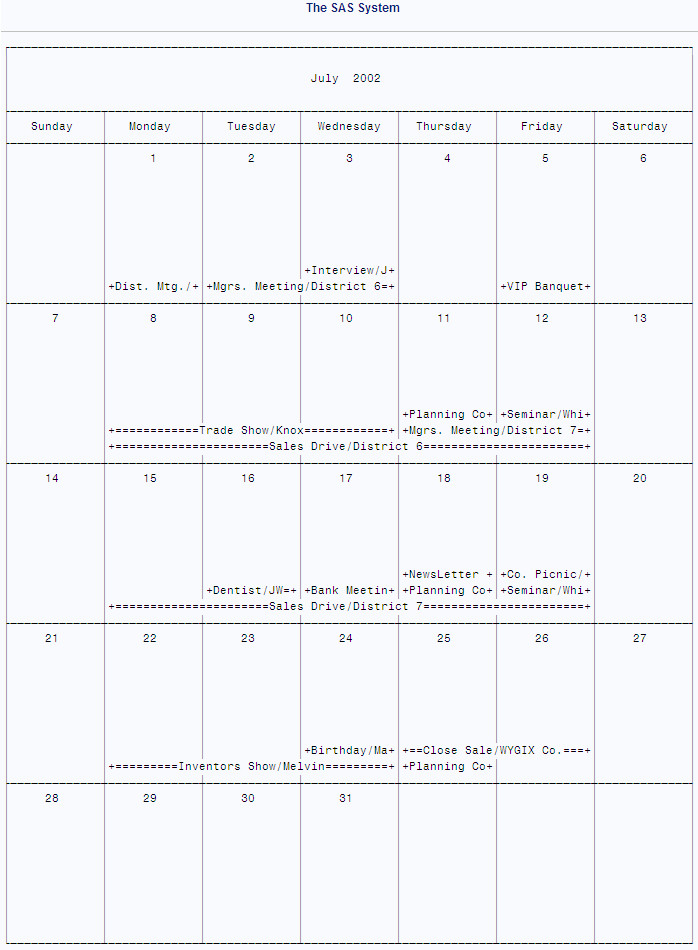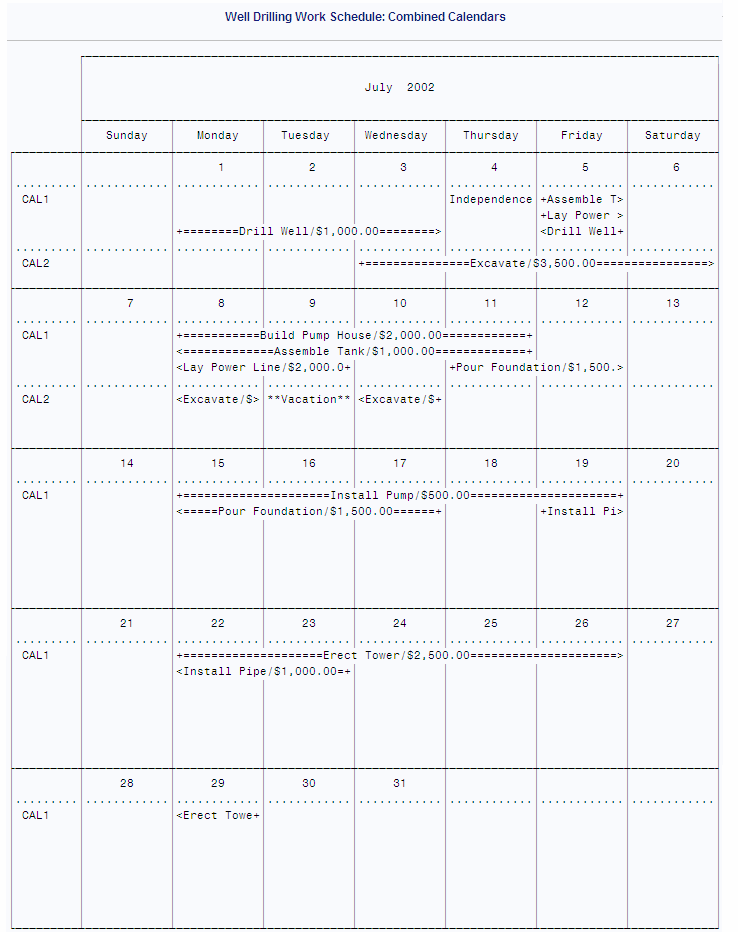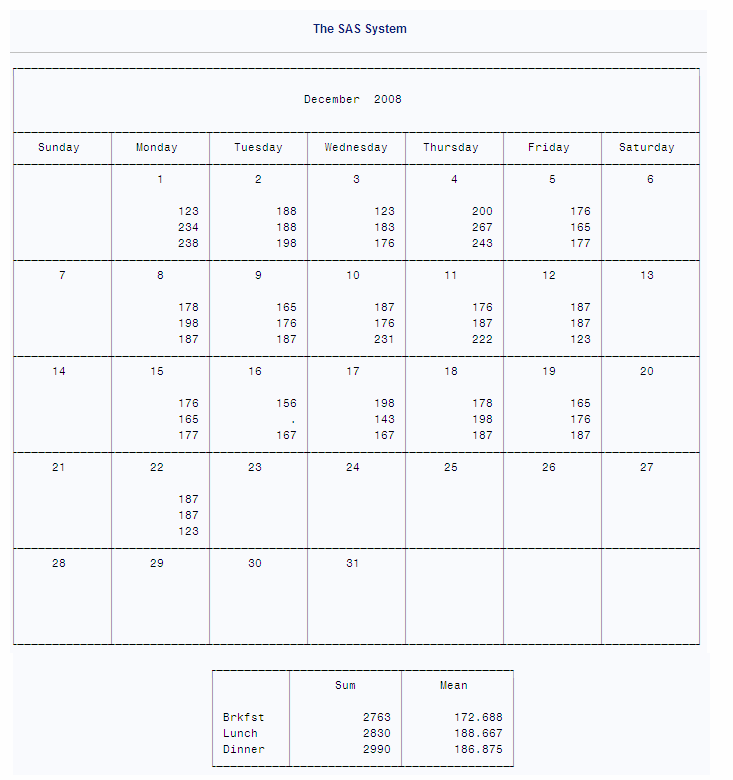CALENDAR Procedure
- Syntax

- Overview
- Concepts
- Results
- Examples
 Schedule Calendar with Holidays: 5-Day DefaultSchedule Calendar Containing Multiple CalendarsMultiple Schedule Calendars with Atypical Work Shifts (Separated Output)Multiple Schedule Calendars with Atypical Work Shifts (Combined and Mixed Output) Schedule Calendar, Blank or with HolidaysCalculating a Schedule Based on Completion of Predecessor TasksSummary Calendar with MEAN Values by ObservationMultiple Summary Calendars with Atypical Work Shifts (Separated Output)
Schedule Calendar with Holidays: 5-Day DefaultSchedule Calendar Containing Multiple CalendarsMultiple Schedule Calendars with Atypical Work Shifts (Separated Output)Multiple Schedule Calendars with Atypical Work Shifts (Combined and Mixed Output) Schedule Calendar, Blank or with HolidaysCalculating a Schedule Based on Completion of Predecessor TasksSummary Calendar with MEAN Values by ObservationMultiple Summary Calendars with Atypical Work Shifts (Separated Output)
Overview: CALENDAR Procedure
What Does the CALENDAR Procedure Do?
The
CALENDAR procedure displays data from a SAS data set in a monthly
calendar format. You can produce a schedule calendar,
which schedules events around holidays and nonwork periods, or you
can produce a summary calendar,
which summarizes data and displays only one-day events and holidays.
When you use PROC CALENDAR you can perform the following tasks:
What Types of Calendars Can PROC CALENDAR Produce?
Simple Schedule Calendar
The following output illustrates the simplest type of
schedule calendar that you can produce. This calendar output displays
activities that are planned by a banking executive. The following
statements produce Simple Schedule Calendar.
For
the activities data set shown that is in this calendar, see Schedule Calendar with Holidays: 5-Day Default.
Advanced Schedule Calendar
The following output is an advanced schedule calendar
produced by PROC CALENDAR. The statements that create this calendar
can perform the following tasks:
For
an explanation of the program that produces this calendar, see
Multiple Schedule Calendars with Atypical Work Shifts (Combined and Mixed Output).
Simple Summary Calendar
The following output shows a simple summary calendar
that displays the number of meals served daily in a hospital cafeteria:
In
a summary calendar, each piece of information for a given day is the
value of a variable for that day. The variables can be either numeric
or character, and you can format them as necessary. You can use the
SUM and MEAN options to calculate sums and means for any numeric variables.
These statistics appear in a box below the calendar, as shown in the
following output. The data set that is shown in this calendar is created
in Summary Calendar with MEAN Values by Observation.
Advanced Scheduling and Project Management Tasks
For more complex scheduling tasks, consider using the
CPM procedure in SAS/OR software. PROC CALENDAR requires that you
specify the starting date of each activity. When the beginning of
one task depends on the completion of others and a date slips in a
schedule, recalculating the schedule can be time-consuming. Instead
of manually recalculating dates, you can use PROC CPM to calculate
dates for project activities based on an initial starting date, activity
durations, and which tasks are identified as successors
to others. For an example, see Calculating a Schedule Based on Completion of Predecessor Tasks.


